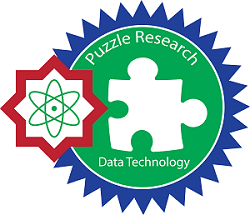Predicting Student Performance Using Deep Learning Models: A Comparative Study of MLP, CNN, BiLSTM, and LSTM with Attention
DOI:
https://doi.org/10.57152/malcom.v4i4.1668Keywords:
Bidirectional LSTM, Convolutional Neural Networks (CNN), Deep Learning Models, Educational Data Analysis, Student Performance PredictionAbstract
This study aims to predict student performance using deep learning models, including Multilayer Perceptron (MLP), Convolutional Neural Networks (CNN), Bidirectional Long Short-Term Memory (BiLSTM), and Long Short-Term Memory with Attention (LSTM with Attention). The dataset comprises student demographic and educational factors, and the models are evaluated using metrics such as MAE, RMSE, R², MSLE, and MAPE. The results show that the CNN model outperforms other models, achieving the highest accuracy in predicting student test scores. The MLP model also performs well, while the BiLSTM and LSTM with Attention models exhibit lower predictive performance. High MAPE values across models suggest a need for alternative metrics in future research. This study highlights the importance of selecting suitable model architectures for predictive tasks in education, emphasizing the effectiveness of convolutional layers in capturing complex patterns.
Downloads
References
A. Costa et al., “Determinants of academic achievement from the middle to secondary school education: A systematic review,” Soc. Psychol. Educ., pp. 1–40, 2024.
A. A. Adongo, J. M. Dapaah, and D. Wireko, “The influence of family size on academic performance of high school students in Ghana,” SN Soc. Sci., vol. 2, no. 9, p. 179, 2022.
D. W. Ambaye, “Determinants of academic achievement among grade ten students at Menkorer secondary school, Ethiopia: the role of individual, familial and school characteristics,” Cogent Educ., vol. 11, no. 1, p. 2299523, 2024.
D. H. Bailey, G. J. Duncan, F. Cunha, B. R. Foorman, and D. S. Yeager, “Persistence and fade-out of educational-intervention effects: Mechanisms and potential solutions,” Psychol. Sci. Public Interes., vol. 21, no. 2, pp. 55–97, 2020.
A. Alshanqiti and A. Namoun, “Predicting student performance and its influential factors using hybrid regression and multi-label classification,” Ieee Access, vol. 8, pp. 203827–203844, 2020.
F. Harrou, Y. Sun, A. S. Hering, M. Madakyaru, and others, Statistical process monitoring using advanced data-driven and deep learning approaches: theory and practical applications. Elsevier, 2020.
A. E. Schwartz and M. W. Rothbart, “Let them eat lunch: The impact of universal free meals on student performance,” J. Policy Anal. Manag., vol. 39, no. 2, pp. 376–410, 2020.
A. Bozkurt, A. Karadeniz, D. Baneres, A. E. Guerrero-Roldán, and M. E. Rodr’iguez, “Artificial intelligence and reflections from educational landscape: A review of AI Studies in half a century,” Sustainability, vol. 13, no. 2, p. 800, 2021.
M. Zulqarnain, R. Ghazali, M. G. Ghouse, Y. M. M. Hassim, and I. Javid, “Predicting financial prices of stock market using recurrent convolutional neural networks,” Int. J. Intell. Syst. Appl., vol. 13, no. 6, p. 21, 2020.
A. Asselman, M. Khaldi, and S. Aammou, “Enhancing the prediction of student performance based on the machine learning XGBoost algorithm,” Interact. Learn. Environ., vol. 31, no. 6, pp. 3360–3379, 2023.
J. Ogg and C. J. Anthony, “Process and context: Longitudinal effects of the interactions between parental involvement, parental warmth, and SES on academic achievement,” J. Sch. Psychol., vol. 78, pp. 96–114, 2020.
B. M. Casey and C. M. Ganley, “An examination of gender differences in spatial skills and math attitudes in relation to mathematics success: A bio-psycho-social model,” Dev. Rev., vol. 60, p. 100963, 2021.
R. R. Weaver et al., “University student food insecurity and academic performance,” J. Am. Coll. Heal., vol. 68, no. 7, pp. 727–733, 2020.
L. Li, S. Rong, R. Wang, and S. Yu, “Recent advances in artificial intelligence and machine learning for nonlinear relationship analysis and process control in drinking water treatment: A review,” Chem. Eng. J., vol. 405, p. 126673, 2021.
D. Papadopoulos and M. M. Hossain, “Education in the age of analytics: maximizing student success through big data-driven personalized learning,” Emerg. Trends Mach. Intell. Big Data, vol. 15, no. 9, pp. 20–36, 2023.
R. Deng, P. Benckendorff, and D. Gannaway, “Linking learner factors, teaching context, and engagement patterns with MOOC learning outcomes,” J. Comput. Assist. Learn., vol. 36, no. 5, pp. 688–708, 2020.
S. Maghsudi, A. Lan, J. Xu, and M. van Der Schaar, “Personalized education in the artificial intelligence era: what to expect next,” IEEE Signal Process. Mag., vol. 38, no. 3, pp. 37–50, 2021.
M. Yaugci, “Educational data mining: prediction of students’ academic performance using machine learning algorithms,” Smart Learn. Environ., vol. 9, no. 1, p. 11, 2022.
G.-W. Cha, H.-J. Moon, and Y.-C. Kim, “Comparison of random forest and gradient boosting machine models for predicting demolition waste based on small datasets and categorical variables,” Int. J. Environ. Res. Public Health, vol. 18, no. 16, p. 8530, 2021.
I. H. Sarker, “Deep learning: a comprehensive overview on techniques, taxonomy, applications and research directions,” SN Comput. Sci., vol. 2, no. 6, p. 420, 2021.
A. de Santana Correia and E. L. Colombini, “Attention, please! A survey of neural attention models in deep learning,” Artif. Intell. Rev., vol. 55, no. 8, pp. 6037–6124, 2022.
Y. T. Badal and R. K. Sungkur, “Predictive modelling and analytics of students’ grades using machine learning algorithms,” Educ. Inf. Technol., vol. 28, no. 3, pp. 3027–3057, 2023.
M. Pichler and F. Hartig, “Machine learning and deep learning—A review for ecologists,” Methods Ecol. Evol., vol. 14, no. 4, pp. 994–1016, 2023.
Y. Cao, T. A. Geddes, J. Y. H. Yang, and P. Yang, “Ensemble deep learning in bioinformatics,” Nat. Mach. Intell., vol. 2, no. 9, pp. 500–508, 2020.
J. Devaraj, R. Madurai Elavarasan, G. M. Shafiullah, T. Jamal, and I. Khan, “A holistic review on energy forecasting using big data and deep learning models,” Int. J. energy Res., vol. 45, no. 9, pp. 13489–13530, 2021.
Downloads
Published
How to Cite
Issue
Section
License
Copyright © by Author; Published by Institut Riset dan Publikasi Indonesia (IRPI)
This Indonesian Journal of Machine Learning and Computer Science is licensed under a Creative Commons Attribution-ShareAlike 4.0 International License.




















